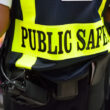Clear as mud
After a whirlwind 15 months of debating and lobbying, the FCC has established a framework for the construction and operation of a nationwide, public/private broadband wireless network in the 700 MHz band that promises to be built to public-safety standards. As the expected public-safety licensee begins to sort through the details of the arrangement, first-responder agencies must prepare to embark on a era with unprecedented opportunities — and questions — regarding data communications. (See news story on page 6.)
“I really can’t recall a time when public safety has had so many communications choices,” said Willis Carter, president of the Association of Public-Safety Communications Officials (APCO). “Choices are really good to have, but they can be confusing.”
Local public-safety communications decision-makers are accustomed to being charged with using available resources wisely, as communication networks need to last at least 10 to 15 years for the return on investment to be acceptable to government officials. Thus, while they welcome the notion of a wireless broadband network, uncertainties surrounding the project make it difficult to make a choice in the near term that may or may not prove to be the wisest decision a decade from now.
For instance, recommending to a cash-strapped government entity that investing now in one of several options to build a broadband network could be second-guessed easily should the nationwide network provide higher data speeds at lower costs — and no upfront capital — in the earliest phase of the program. On the other hand, counting on the national 700 MHz network could prove to be a mistake because of all the unknowns.
“This is an experiment — a bold one and an exciting one,” said John Facella, director of public-safety markets for M/A-COM. “But when you go on an experiment, you don’t know how it is going to turn out, and you tweak along the way until you get it the way you want it.”
Given that the 700 MHz auction may not conclude until March, it’s possible that a network-sharing agreement between the D Block winner and the public-safety licensee — expected to be the Public Safety Spectrum Trust (PSST) — would not be finalized until next fall, and that time could be extended if the FCC is required to mediate any disputes. Thus, it could be a year before local entities have any idea what the public-safety subscriber pricing will be for the national network.
“I can’t give [public-safety officials] any good answers, because this is a new game in town and it’s going to be hard to know exactly how to do it,” said PSST chairman Harlin McEwen.
Perhaps an even bigger issue is timing. The FCC order calls for the D Block licensee to construct the network in a manner that meets four-, seven- and 10-year buildout plans — benchmarks that the D Block licensee might miss if the FCC does not strengthen the penalties associated with missing them, Facella said. Even if the D Block operator adheres to the FCC schedule, there is no way for a local entity to know when the broadband wireless network will be available in its area.
“You don’t know where they’re going to start [building out the national network],” Facella said. “Given the uncertainty of the cost and given the uncertainty of the buildout — and whether their region will be built out early or late — I think public safety has to ask, ‘How badly do we need our broadband network?’ If they need it fairly urgently, I don’t think I’d wait.”
Indeed, Washington, D.C., has built its own 700 MHz wireless broadband network and New York City has committed to a $500 million network on 2.5 GHz spectrum. Projects like these that already have funding likely will not be affected by a national network that won’t be established until next decade, said Charles Werner, fire chief for the city of Charlottesville, Va.
“I think we are at a point where everyone is having to make their best [guess] at this,” Werner said. “If you have a grant for doing this, do you move forward or do you hold off and risk losing that grant?”
Edmond Vea, president of Frederick G. Griffin Engineering, echoed this sentiment, predicting that public-safety entities will proceed with broadband projects that already have been funded. However, those public-safety agencies that have not reached that stage may soon be rethinking their wireless broadband strategy and may resist the temptation to take action until the national network situation is clearer, he said.
“I think government hates that scenario where there’s a big question mark over it, so most of them are going to opt for caution,” Vea said.
Few public-safety entities appear to be wrestling with this problem, at least at the moment. Carter and Robert Gurss, APCO’s director of legal and government affairs, said they have not heard from any agencies struggling with their broadband strategy.
But the dilemma seems almost inevitable for as long as the national 700 MHz network is in limbo — a status that likely will exist for at least another year, according to wireless industry consultant Andrew Seybold.
“The real question is, ‘How is this going to play out?’ I don’t think anybody knows,” Seybold said. “I have no idea whether AT&T is interested. I have no idea whether Verizon is interested. The downside to the spectrum is that it could be an onerous buildout, if the public-safety community demands fully hardened sites everywhere in the United States and the type of coverage they’re used to.”
While the subscription costs to the national network are uncertain today, the costs associated with a public-safety entity building its own network are known. The 4.9 GHz band is dedicated to public safety, but poor propagation characteristics make it economically impractical for anything other than hot-spot applications, and lower-cost solutions in the crowded 2.4 GHz unlicensed band typically have not met public safety’s needs in terms of reliability, McEwen said.
For those public-safety agencies that would like to subscribe to the national network but need wireless broadband services before a better long-term decision can be made, subscribing to a commercial operator’s broadband service may be the best interim option, Seybold said.
“A lot of these local police departments are already using commercial service — Verizon or AT&T or somebody else — and that’s a nice way to hedge your bet until this spectrum [is developed],” he said.
McEwen agreed, but noted that a commercial wireless broadband service is not an option for all public-safety entities. “I think that’s a very viable option, if they have the coverage where you want it — that’s the problem, the coverage isn’t every place,” he said. “That’s why this [nationwide 700 MHz network] is going to be better, eventually.”
It’s that promise that will have the entire public-safety industry monitoring next year’s 700 MHz commercial auction — and subsequent negotiations with the PSST — with unprecedented interest, M/A-COM’s Facella said.
“It is quite unclear who will bid, what they will bid, who will be successful in the auction and what kind of network arrangement will be negotiated between the public-safety licensee holder and the winner of the auction,” Facella said. “There are just so many steps in this process, and all of them are brand new, so I would say it’s somewhat uncertain how it’s going to look. Even after all of that is done, what’s [still] uncertain is who in public safety will decide they want to get on this network.”
| PRO | CON |
|---|---|
| COMMERCIAL NETWORK | |
| No upfront capital outlay. Devices are plentiful and relatively inexpensive. Can be used by all facets of government. | Recurring monthly costs. Devices and network are not hardened to public-safety standards. Little control over performance, coverage and availability of network. |
| 2.4 GHZ & 5 GHZ UNLICENSED NETWORK | |
| Equipment is plentiful and relatively inexpensive. Can be used by all facets of government. | Upfront capital is needed to build network. Unlicensed bands have become very crowded quickly, creating constant interference issues. |
| 4.9 GHZ NETWORK | |
| Spectrum licensed to public safety, so performance/capacity factors are more predictable, particularly during an incident. Commercial equipment from the 5 GHz band can be leveraged, lowering costs. | Upfront capital is needed to build network. Propagation characteristics require a lot of nodes to cover a given area. Cannot be used by all government agencies, only public safety. |
| 700 MHZ NATIONAL NETWORK | |
| No upfront cost. Will be built to public-safety standards, and public-safety traffic will be prioritized. Can be used by all facets of government. Devices should be plentiful. | Uncertainty and timing. The first phase is not scheduled for completion until 2013. Services, costs and local input are issues still to be determined. |

















